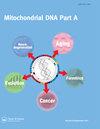首次鉴定印度Varanus物种的法医信息核苷酸测序(FINS):在野生动物法医和保护中的意义
IF 0.6
4区 生物学
Q4 GENETICS & HEREDITY
引用次数: 13
摘要
巨蜥是世界自然保护联盟红色数据名录中分布广泛的濒危爬行动物。在印度,根据形态和生态特征,将其分为孟加拉巨蜥、黄巨蜥、沙漠巨蜥和水巨蜥四种。这四种物种被列为1972年印度野生动物(保护)法案的附表I物种。本文首次尝试提出基于三个线粒体基因的印度瓦纳努斯的法医信息核苷酸测序(FINS)。该分子框架将有助于鉴定印度瓦拉努斯物种和监测所得的贸易产品,因此对野生动物管理和保护具有重要应用。在这里,我们使用了四种巨蜥的14块已知的皮肤碎片;扩增三个线粒体基因(Cyt b、12S rRNA和16S rRNA)的部分片段进行遗传研究。在Cyt b、12S rRNA和16s rRNA中,我们分别观察到5、5和4个单倍型;71、69和43个可变站点;在四种印度巨蜥中分别有90、89和50个简约性信息位点。尽管如此,核苷酸组成分别为T 26.4、C 32.8、A 29.2和G11.6;T 18.8, C 29.7, A 34.0, G 17.5;在Cyt b、12S rRNA和16S rRNA中,T为21.7,C为27.3,A为32.5,G为18.5。邻近连接系统发育树和三个线粒体基因的最大简约树显示了相似的结果,表明印度巨蜥存在两个主要分支。本文章由计算机程序翻译,如有差异,请以英文原文为准。
Forensically informative nucleotide sequencing (FINS) for the first time authentication of Indian Varanus species: implication in wildlife forensics and conservation
Abstract Monitor lizards are Varanus species widely distributed, endangered reptile in the IUCN red data list. In India, based on the morphological and ecological characteristic, it is divided into four species viz. Bengal monitor lizard, Yellow monitor lizard, Desert monitor lizard and Water monitor lizard. These four species listed as Schedule I species in Indian Wildlife (Protection) Act 1972. This paper first attempt to present Forensically Informative Nucleotide Sequencing (FINS) for the Indian Varanus based on three mitochondrial genes. The molecular framework will be useful for the identification of Indian Varanus species and trade products derived from monitors and as such, have important applications for wildlife management and conservation. Here, we used known 14 individual skin pieces of four species of monitor lizards; the partial fragment of three mitochondrial genes (Cyt b, 12S rRNA, and 16S rRNA) were amplified for genetic study. In Cyt b, 12S rRNA and 16s rRNA, we observed, 5, 5 and 4 Haplotypes; 71, 69, and 43 Variables sites; 90, 89, and 50 Parsimony Informative sites within four species of Indian monitor lizards, respectively. Despite it, the nucleotide composition was T 26.4, C 32.8, A 29.2 and G11.6; T 18.8, C 29.7, A 34.0 and G 17.5; T 21.7, C 27.3, A 32.5 and G 18.5 in Cyt b, 12S rRNA and 16S rRNA, respectively. The neighbor joining phylogenetic tree and maximum parsimony tree of three mitochondrial genes, showed similar results and reveal that, there are two major clades are present in Indian monitor lizards.
求助全文
通过发布文献求助,成功后即可免费获取论文全文。
去求助
来源期刊

Mitochondrial Dna Part a
Biochemistry, Genetics and Molecular Biology-Genetics
CiteScore
3.00
自引率
0.00%
发文量
6
期刊介绍:
Mitochondrial DNA Part A publishes original high-quality manuscripts on physical, chemical, and biochemical aspects of mtDNA and proteins involved in mtDNA metabolism, and/or interactions. Manuscripts on cytosolic and extracellular mtDNA, and on dysfunction caused by alterations in mtDNA integrity as well as methodological papers detailing novel approaches for mtDNA manipulation in vitro and in vivo are welcome. Descriptive papers on DNA sequences from mitochondrial genomes, and also analytical papers in the areas of population genetics, phylogenetics and human evolution that use mitochondrial DNA as a source of evidence for studies will be considered for publication. The Journal also considers manuscripts that examine population genetic and systematic theory that specifically address the use of mitochondrial DNA sequences, as well as papers that discuss the utility of mitochondrial DNA information in medical studies and in human evolutionary biology.
 求助内容:
求助内容: 应助结果提醒方式:
应助结果提醒方式:


